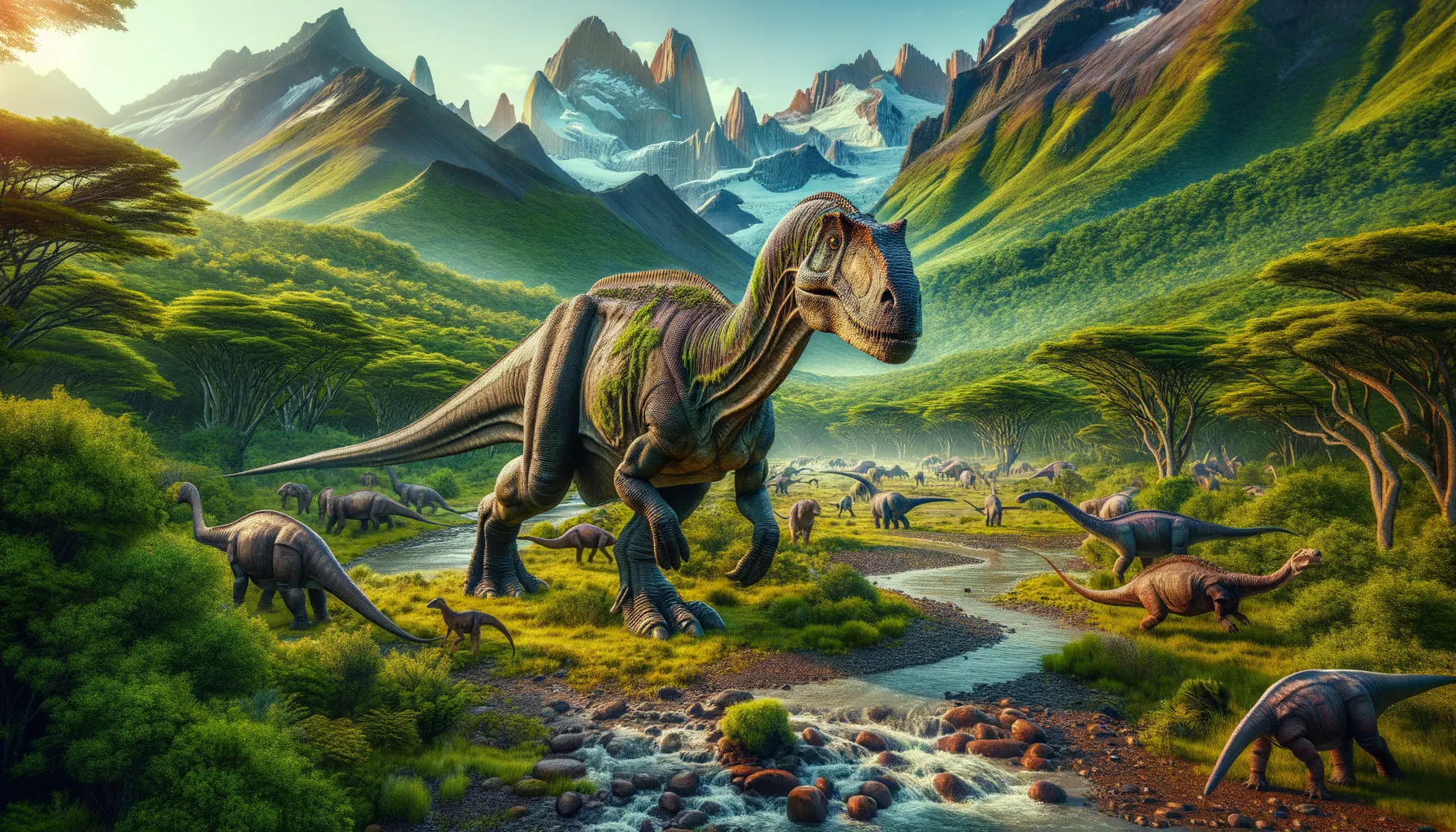
Tehuelchesaurus
A gentle giant of the Jurassic era.
Period
Jurassic
Length
Estimated to be about 50 feet long.
Height
Around 10 feet at the shoulder.
Weight
Approximately 20 tons.
Tehuelchesaurus was a massive sauropod dinosaur that roamed the lands of what is now Argentina during the Jurassic period. Known for its long neck and tail, it was one of the many titans of its time. Its fossils have provided valuable insights into the diversity of sauropods in South America.
Diet
Tehuelchesaurus was a herbivore, feeding on vast amounts of plants. Its long neck allowed it to reach high branches and vegetation that shorter creatures couldn't access.
Hunting
Being a herbivore, Tehuelchesaurus did not hunt. Instead, it likely spent much of its time foraging for plant material.
Environmental challenges
Tehuelchesaurus faced challenges like finding sufficient amounts of food to sustain its large body size, especially during drier periods. It needed a vast habitat with ample vegetation. Climate changes could have also affected its food sources, requiring it to migrate in search of better conditions.
Speed
Likely slow-moving due to its large size.
Lifespan
Estimated to be several decades long.
First discovery
Discovered in Argentina in the 1990s.
Fun Facts
- Tehuelchesaurus was a long-necked dinosaur that roamed what is now Patagonia, Argentina, during the Late Jurassic period.
- This dinosaur is named after the Tehuelche people, indigenous to the region where its fossils were found.
- Tehuelchesaurus is believed to have been a herbivore, meaning it likely fed on plants, using its long neck to reach high vegetation.
- It was a relatively large dinosaur, estimated to be about 40 feet in length, which helped it protect itself from predators.
- The discovery of Tehuelchesaurus fossils has helped paleontologists learn more about the diverse species that lived in South America during the Jurassic period.
- This dinosaur is part of the sauropod family, known for their massive size, long necks, and tails.
- Tehuelchesaurus lived around 150 million years ago, a time when the earth's continents were arranged very differently from today.
Growth and Development
Young Tehuelchesaurus likely grew rapidly after hatching to reach sizes that deterred predators. Fossils suggest a series of growth rings in their bones, much like trees, indicating changes in growth rates over their lifespan.
Habitat
It inhabited environments rich in plant life, such as floodplains and forested areas. These regions provided the necessary resources for food and water. Seasonal changes would affect its habitat, possibly leading to migrations.
Interaction with other species
Tehuelchesaurus might have coexisted with other herbivorous dinosaurs, sharing resources without much conflict. It had to be wary of large predatory dinosaurs, which posed a threat especially to the young. Its sheer size afforded protection against many would-be attackers.
Natural lifespan
Tehuelchesaurus had a natural lifespan likely around 70 years.
Reproduction
Tehuelchesaurus reproduced by laying eggs, likely in nesting grounds protected from predators. Parental care after hatching is largely unknown, but young would have stayed in groups for protection.
Social behaviour
It may have moved in herds, providing safety in numbers. Such gatherings would help protect them from predators and aid in locating food sources. Communication within these groups may have been important for coordinated movement.
Fossil locations
Fossils of Tehuelchesaurus have primarily been found in the Chubut Province of Argentina. These discoveries have helped paleontologists understand the distribution of sauropods in South America. The fossils are crucial for studying the diversity of dinosaur species in this region.
